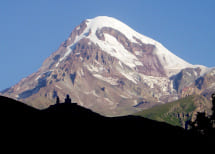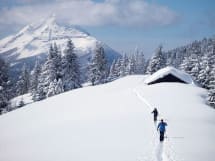Contacts
3, Podolskoe shosse,
Moscow, 115093
phone: +7 (926) 924 7948
e-mail: info@elbrustours.ru
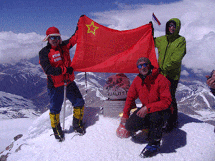
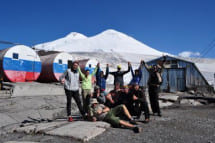
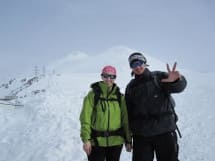
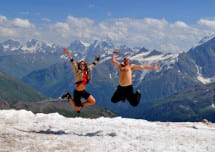
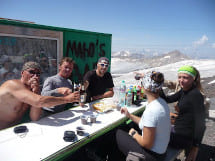
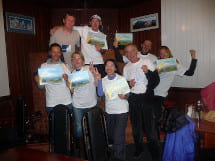

Welcome to Mount Elbrus!
Kailash Kora. Tibet from Nepal
The tour to Tibet through Nepal including Kailash Kora is an absolutely wonderful and unforgettable journey; it enriches your life with the unique experience, which can be the source of your spiritual transformation. The tour consists of four parts. The first part is acclimatization: you spend a few days near Gosaikunda lake and climb Surya peak. Having prepared your body for the high altitude you travel to the holy lakes, Manasarovar and Rakshas, where you can also enjoy hot springs. Then you do the third and the most difficult part – you walk along the outer loop around Kailash, which means you do the external Kailash Kora. Kailash is the holy mountain of four religions. The Kora is 53 km long including Dolma La pass. The last part of the tour is pure cultural: you visit the “Valley of Happiness” which is full of apricot trees and where life of people hasn't changed for the last few centuries. At the end you drive back to Kathmandu where you have a full sightseeing day.

|
Аvailable dates for 2020: |
Price: |
|
02.05.2020 - 19.05.2020* 26.09.2020 – 13.10.2020 |
|
* - price of participation in the guaranteed group is 1950 USD
The highlights of the tour:
- you travel through different climate zones
- you get a proper acclimatization
- you see the holy mountain Kailash
- you visit authentic Buddhist monasteries
- you see exotic animals and birds
- you taste the food of Tibetan cuisine
- you visit the UNESCO heritage sights of Kathmandu
The route:
Kathmandu, 1350 m – Singh Gompa, 3300 m – Laurebina Yak, 3900 m – Gosaikunda lake, 4100 m – Surya Peak, 5145 m – Mangsen Gompa, 3320 m – Syabrubesi, 1460 m – Saga, 4500 m – Manasarovar, 4600 m – Darchen, 4650 m – Dirapuk monastery, 4950 m – Shiva Tsal, 5330 m – Dolma-La pass, 5630 m – Tukje Chenpo, 5440 m – Zutulpuk monastery, 4835 m – Saga, 4500 m – Paiku Tso, 4550 m – Kerung, 2800 m – Kathmandu, 1350 m
The detailed itinerary:
Day 1. Kathmandu, 1350 m
Transfer from Tribhuvan International airport to a hotel in Kathmandu. Obtaining the group permit for visiting TAR (Tibetan Autonomous Region of People's Republic of China). An evening walk around Thamel – a tourist district of Kathmandu. Night in hotel.
Day 2. Full excursion day in Kathmandu. (Depending on the circumstances, this day can be moved to the end of the tour)
We will visit the following sights:
- Patan, the historical town on the South of Bagmati river. It is considered to be one of the most beautiful places in the world. And it has 1200 temples and stupas.
- Swayambunath stupa which is considered to be the place of the first settlement of people in Kathmandu valley
- Durbar square, included into the list of World UNESCO heritage
- Night in hotel.

Day 3. Kathmandu – Deurali, 2600 m
After breakfast we take a private jeep and drive to Dunche village (1950 m). Upon arrival we have tea and then we prepare our luggage for porter who will carry it to Deurali. And then we start walking. Dunche belongs to the area of Langtang National Park which was formed in 1970. Night in a guest house at Deurali.
Day 4. Deurali, 2630 m – Singh Gompa, 3300 m
Today we walk through a pine forest to a village called Dimsa and then to Singh Gompa. It takes about 5 hrs to get there including lunch break. Singh Gompa is a Tamangi monastery located at the elevation of 3250 m. There is a nearby shop selling yak cheese. Sometimes a red panda can be seen here too. Night in a lodge near Singh Gompa monastery.
Day 5. Singh Gompa, 3300 m – Laurebina Yak, 3900 m
Today we try to walk as slow as possible because this is very important for proper acclimatization. We stop for lunch at Cholongpati where we can also buy some souvenirs. And then it takes another 2-3 hours through rhododendron bushes to get to Laurebina. In the evening we enjoy the view of Ganesh-Himal, Langtang and Tibetan mountains. Night in a lodge.
Day 6. Gosaikunda lake, 4100 m
After breakfast we slowly hike up to a view point from where we can see Gosaikunda lake hidden between mountains. The hike usually takes about 3 hrs. We reach our lodge by lunch time. After that we can go on an acclimatization walk to the holy lake itself. For half a year the lake is frozen. Pilgrims from India and Nepal visit this lake which was created by the hit of Shiva's trident according to a legend.
Day 7. Gosaikunda lake. Surya Peak climb attempt, 5140 m
We have early breakfast after which we are walking for 4.5 km to Surya Peak. If we reach the top we gain 750 m altitude. If we feel that this hike is too difficult for us we can turn back on the way and do a kora around the lake instead.

Day 8. Gosaikunda lake, 4100 m – Mangsen Gompa, 3000 m
Today we walk to the direction of village Syabrubesi. Beautiful meadows and rhododendron woods are on our way down. 5-6 hours walk. We stop at Mangsen Gompa. Night in a lodge at the monastery.
Day 9. Mangsen Gompa, 3000 m – Syabrubesi, 1460 m
We continue our descent toward Syabrubesi. Upon arrival there we relax and take a rest before crossing Tibetan border on the next day. Night in a hotel.

Day 10. Syabrubesi, 1460 m – Saga, 4500 m
Early breakfast. 25 km jeep ride to Rasuwa. Here we cross the border between Nepal and Tibet. Then we meet our Tibetan guides and drive for 40 minutes to Kerong town where we stop for lunch and register at the police. Then we drive up to Tibetan plateau with a short stop at Chakhyung pass (5200 m). From Gyirong we cross Brahmaputra river and enter Saga, a town on 4500 m. Night here in a lodge.
Day 11. Saga, 4500 m – Mayum La pass, 5207 m – Manasarovar, 4600 m
Breakfast. Today we drive over Mayum La pass to Manasarovar lake which takes about 8 hrs. We pass the most beautiful scenery of the mountains, we stop frequently to take pictures. Night in a guest house where 4-5 people share a room.

Day 12. Manasarovar, 4600 m – Darchen, 4650 m
After breakfast we have time to walk to the lake, to swim in hot springs at Chui Gompa monastery and to drive to the salty lake Rakshas. At about 2 p. m. we take our mini-bus to Darchen. It is 40 km drive which takes about 30 minutes. In our guest house at Darchen we have lunch and then we walk around the town in the afternoon.
Day 13. Darchen, 4650 m – Dirapuk monastery, 4950 m
Today we begin our Kora around Kailash. The first day is quite easy. From Darchen we walk for about an hour to get to Tarpoche from where we cross a bridge over Lkha Chu river and get to Chugu monastery built on Nyenri mountain in the 13th . The monastery has three holy caves. Then on the way we see Tamdrin Dronkang rock with the self-appearing image of Hayagriva. This first day of the Kora ends at Dirapuk monastery, Dirapuk means “cave of a female yak horn”.
Here is also a cave called Gotsangpy. The monastery is located just in front of the North side of Kailash. On full moon night from here is an amazing view of Kailash. Night in a guest house.
Day 14. Dirapuk monastery (4950 m) – Shiva Tsal (5330 m) – Dolma La pass (5636 m) – Tukchje Chenpo lake (5440 m) – Zutulpuk monastery (4835 m)
The second day of the Kora is the most difficult one because of Dolma La pass. We must leave Dirapuk very early in the morning to spend less time in strong sunshine. After passing Dolma Chu river we begin walking up to a place called Shiva Tsal. Pilgrims are supposed to undergo a symbolic death here and leave behind their old life along with an item of clothing to represent it. There is a nearby hill of Vajra Yogini, a burial place for lamas and pilgrims. Dolma La is the pass of Tara Goddess, one of the main boddhisatvas in Tibetan Buddhism. On the top of the pass there are mani stones and prayer flags. One the way down from Dolma La we see the turquoise color of Tukchje Chenpo lake which is almost always covered with ice. And in the afternoon we reach Zutulpuk monastery, the name of which means “the wonder cave”. Master Milarepa was meditating in this cave. Night in a guest house in front of the cave.
Day 15. Zutulpuk monastery, 4835 m – Saga, 4500 m
This is the last and the easiest day of our Kora. In two hours walk we reach Darchen and then it takes 7 hours to drive to Saga. Night in the same guest house at Saga.
Day 16. Saga, 4500 m – Paiku Tso lake, 4550 m – Kerung, 2800 m
After breakfast we drive 190 km to Kerung, the Valley of Happiness. The drive includes 40 km of a side road to see Shihsapangma mountain, the lowest of the eight-thousanders, as well as Paiku Tso lake.
Day 17. Kathmandu.
Today is a long drive back to Nepal, to Kathmandu. Night in a hotel in Kathmandu.
Day 18. Breakfast. Transfer to Tribhuvan International Airport. Departure from Nepal.
The price includes:
- an experienced Russian guide for the whole length of the tour
- Langtang National Park permit in Nepal
- porters for the trekking part of the tour in Nepal, 20 kg of luggage per porter
- porters or cargo yaks for the Kora around Kailash, 15 kg per porter (one porter for two tourists)
- Chinese group visa for Tibet
- permit for the Kora
- English speaking Tibetan guide on the territory of Tibet
- overland transportation during the whole tour (jeep or minibus)
- accommodation
- breakfasts
The price DOES NOT include:
- international flight to Nepal
- Nepalese tourist visa
- meals other than breakfasts
- medical insurance
- all other things not mentioned above
Necessary clothes and equipment:
- personal cup, plate and spoon
- thermos – 1l
- sleeping bag for comfort temperature -7 C
- сaremat
- forehead torch
- trekking boots
- light sandals
- sneakers
- jacket made of breathable membrane fabric (for ex. Gore-Tex)
- trousers made of breathable membrane fabric (for ex. Gore-Tex)
- down sleeveless jacket
- fleece jacket
- fleece trousers
- thermal underwear (trousers and a long sleeve T-shirt)
- long sleeve shirts and T-shirts
- light and warm socks
- light comfortable trousers and shorts
- sun protection hat
- warm gloves
- warm/fleece hat
Additional equipment:
- 75-90 liters backpack or any big bag for transportation which you can give to a porter to carry
- light small backpack for carrying valuables and other personal items which you carry yourself all the way on the trek
- a cover for a bag to protect from rain
- sun glasses in a hard box
- walking poles (optional)
- personal medical kit
- sunscreen cream SPF 45+
- trekking towel
- toothpaste, toothbrush, soap
- wet tissues
Important information:
Documents:
- traveling passport with the expiration date not earlier than 6 months after the end of the trip
- 4 photographs for visa and permits (3x4 cm)
- Nepalese tourist visa is $50 for 30 days.
- One month before the tour we need a photocopy of your passport and two photographs (3x4 cm) for applying for Chinese (Tibetan) visa
Accommodation:
- a hotel in Kathmandu is a 3* hotel, with two people sharing a room
- lodges, or simple guest houses, in the other places
Food. Dinners and lunches are not included in the price. The average price for lunch or dinner is $15-20.
Weather:
The weather is usually sunny and quite stable during the whole time of the tour. Day time temperature can reach 16-18 C. At low altitude you can trek in a T-shirt. But above 3000 m it's colder especially in the night so you should wear a fleece jacket and carry some warm clothes with you in case of the bad weather. There's also a chance of raining or snowing (if above 4300 m).
Insurance and medicines:
There's no particular vaccination required for visiting Nepal and Tibet. Our guides always carry a medical kit but you should also have your own medicines for your specific needs. It's not recommended to drink spring water. Vegetables and fruits should be washed before consuming.
You are supposed to buy a medical insurance separately.
Responsibility:
As any other kind of active recreation program, this trip can be dangerous for your health. The guide is fully responsible for the safety of the tourists only if they follow all the rules and recommendations of the guide. In difficult situations during the tour the guide is supposed to take all decisions, and the tourists must obey. The guide has all necessary group equipment, mobile connection and contact numbers of the local emergency services. Our main priority is to keep our clients safe!






